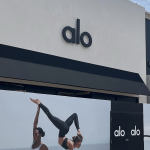At this past Outdoor Retailer Winter Market,show, dozens of companies proudly proclaimed their first steps on the path to environmental sustainability.
For Jake Lah, founder and president of tent pole maker DAC, that journey began almost 6,000 miles away in Seoul, Korea. As a child, Lah grew up in a house surrounded by a small pond, greenhouse and rose garden that he tended with his father.
“I lived at the same home until I went to the MBA program at the University of Michigan in Ann Arbor,” recalls Lah. “At the school dormitory, I was almost sick and I realized one of the main reasons was there was no green. In my second year, I moved into an apartment and made it almost like a greenhouse.”
Those life experiences influenced Lahs view of the world. “I believe there are mainly two different approaches we need to take. One is to provide a better environment where we live. The other is to minimize damages to Mother Nature,” he says.
When Lah launched DAC, environmental issues were as important as business decisions concerning human resources and profit statements. Lah reflects, “When I started DAC in 1988, I knew already that I couldnt survive in an all-grey industrial complex. So, it was natural for me to find ways to make our factory green.”
But translating a green ethic to a manufacturing process is easier said than done. “As a new factory, we could barely catch up with regulations of the EPA. My incentive was mainly to protect our own employees when I started to look into an anodizing process,” Notes Lah.
That process involved adding nitric acid to phosphoric acid. Aluminum tubes are then boiled in the mix of chemicals. Lah says the yellowish fumes wafting from the boiling tank reminded him of tear gas. At that time, however, there was no other method available to make the aluminum surface bright.
Committed to protecting his employees, Lah started a journey to fundamentally change the way tent poles are manufactured. “Without knowing the destiny, we started. We started by trial and error, which lasted eight years,” He says.
Lah faced obstacles on many fronts including manufacturing, materials science and chemistry. Despite setbacks, he persevered in his search for a viable alternative. “After trying so hard for many years, we successfully eliminated nitric acid and phosphoric acid from our anodizing process. We also built a water recycling system to reduce water consumption in anodizing,” he says.
At the beginning, Lah also had to convince his employees that environmentally friendly values made good business sense. One of the biggest challenges, he explains, was convincing employees that gardens and other aesthetics are not business luxuries.
“As a newly started company, I was supposed to put all of my time and resources to make both ends meet as quickly as possible,” Lah explains. “It wasnt easy to make employees understand why I planted apple trees while the company was still running at a loss. My staff was not happy when I built a small garden where they wanted to store materials.”
He adds, “Money was not a big issue because I could start to build a garden with just hundreds of dollars. As time went by, people started to enjoy flowers, fruits and autumn leaves. Now, people feel proud of their working environment. It has been a big challenge. But I strongly believe a green environment gives a positive influence to workers, even though we cannot quantify the benefit.”
Today, DAC tent poles are used by major outdoor brands such as The North Face, Marmot, Sierra Designs, Big Agnes, REI and Eureka.
“Weve developed tent poles to meet the needs of tent users,” says Lah. “In 1997, we developed a new tent pole. The Featherlite was lighter than existing tent poles in the market. We realized that everybody was looking for ways to build lighter-weight tents. So, we worked hard to make the tent pole lighter.”
Well-regarded in terms of design and engineering, DACs environmental story is also generating interest. Lah notes, “Up until two or three years ago, nobody showed interest in less damage to environment issues. Probably, they didnt look at the manufacturing side until then.”
Lah continues, “Recently, however, I feel that there are exploding levels of interest on such issues. I am very happy with recent movement on the environment issue. There is a possibility that more and more manufacturers will start to think about the environment issue seriously. It will be great if we can get a chance to let other manufacturers know that investment in environment issues will not eat up their profits. One of my biggest hopes is to let other manufacturers know that a green effort can help them, even in terms of business.”
Lah is bemused by the current “green” buzz since the eco-ethos has been part of his life for decades. “I didnt think much about what environmentally friendly means. Recently, Ive recognized that more and more people talk about environmental friendliness, green, et cetera It seems like environment issues have become a big marketing drive for many companies,” he says. “Most people talk about recycling-recycled paper, recycled plastic, et cetera-but I feel there is one important issue missing. People dont talk much about the green environment where we live and where we work-especially in manufacturing.”
Lah concludes, “I believe a green and clean environment will naturally lead people to think more about nature and realize how important it is, and then start to think how to prevent damages.”














